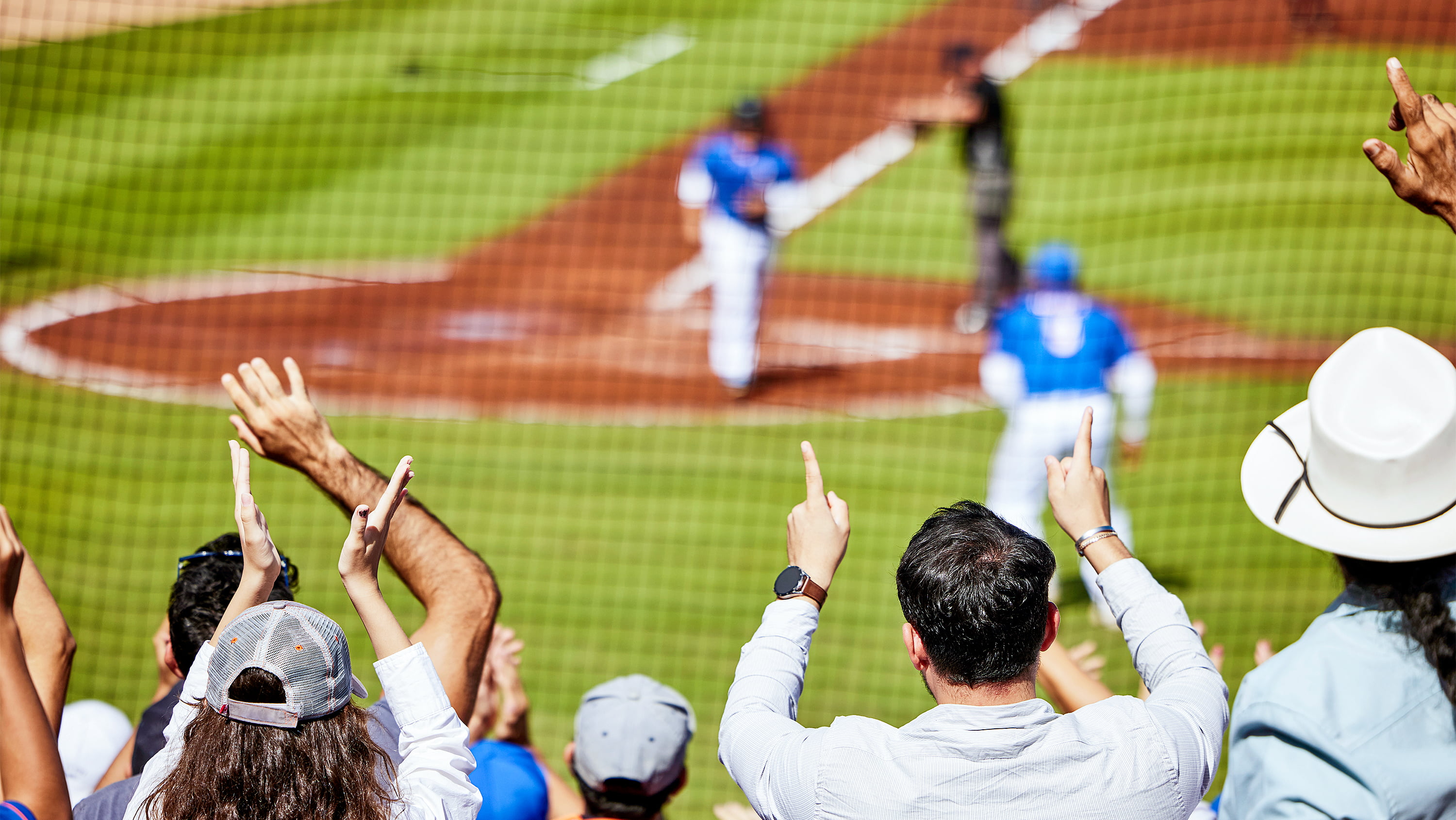One of the most provocative gestures in recent baseball history was Toronto Blue Jay José Bautista’s notorious bat flip after hitting a home run against the Texas Rangers in 2015.
The celebratory toss ignited a storm of indignation, as many fans regarded it as disrespectful to the game, violating some unwritten rule of baseball etiquette. Others found it inspiring — the perfect punctuation for a moment of triumph.
Bautista argued at the time that the criticism betrayed cultural ignorance. In Asia and South America, for example, players flip bats all the time. It’s just part of the game.
Eight years later, he told Toronto Life Magazine, “Look at today. Bat flips are way more accepted across the league. Everybody loves them.”
For U of A anthropologist André Costopoulos, the Bautista controversy is a perfect example of how social norms evolve, illustrated by one microcosm of human behaviour.
A passionate baseball fan from the age of four, when his father first took him to see the Montreal Expos play the San Diego Padres, Costopoulos evokes baseball — especially the ritual of fighting — whenever he needs a clear example to elucidate social evolution.
“We study social change in archaeology [a sub-field of anthropology’s] through the material record,” he says. “A good way of getting people to see that is to provide a concrete example of behaviour that didn’t used to exist at all and is now commonplace.
“Then you can ask the question, ‘How did it become part of our culture?’ Conflicts were resolved differently than they are now, and that’s cultural evolution.”
As Costopoulos recently explained on CBC’s Edmonton AM, social change starts with an “innovation” — conduct that appears for the first time in a given context. He points to the ritual of charging the pitcher’s mound, which often happens when a pitched ball hits, or comes close to hitting, a batter.
“Since the beginning of baseball, there must have been conflict or tension, but there weren't agreed-upon ways of resolving it,” he says. Then one day someone charged the mound for the first time (Costopoulos isn’t sure when) and it quickly caught on.
But only because it was tolerated by all actors involved, including players and fans, and officials.
“It was an innovation with a certain level of fitness for its environment, so it could reproduce and spread — it wasn’t eliminated from the system.” Instead, it became a solidified and ritualized way to acceptably resolve conflict.
“Now, when I say, ‘baseball fight’ you know exactly what I mean,” he says.
But sometimes social innovations are “selected out” when the community considers them unacceptable. During a game between the Los Angeles Dodgers and the San Francisco Giants in 1965, Dodgers catcher John Roseboro brushed Giants batter Juan Marichal in the face while throwing back to the mound. Marichal responded by hitting Roseboro in the head with his bat, instigating a 14-minute, bench-clearing brawl with another player grabbing a bat on the way out of the dugout.
When the dust settled, Roseboro left the field with a two-inch gash on his head, Marichal with his reputation in tatters. It was a level of violence too high for anyone to take, and was quickly selected out of the game, never to return, says Costopoulos.
More innocuous conflict rituals endure as a result of crowd approval, such as Chicago Cubs manager Lou Piniella kicking sand at the umpire’s feet.
“The crowd loves it, and once that approval is signalled, the behaviour spreads from there,” says Costopoulos. “It becomes more frequent over time.”
Such moments point to the crucial role of crowds in deciding what’s permissible in a given context. In this case, baseball serves as a contained laboratory for demonstrating how ethical norms — often called “community standards” — are established in a larger society, Costopoulos says.
As for the contentious bat flip, let’s just say it’s still in flux, he says. More time is needed to see if it truly becomes accepted in Major League Baseball, despite Bautista’s recent comments.
“What we are witnessing there is an ongoing selection process,” a matter of negotiation, Costopoulos says. “There’s been an increase in frequency, but it hasn’t become fixed in the population in evolutionary terms.”
Costopoulos is adamant that he in no way condones fighting in any sport. His observations are merely meant to shed light on how rituals of human behaviour evolve in one simple context.
Much of his scholarly work explores the evolution of social complexity and human adaptation to environmental change. While baseball has intrigued him for years, he hasn’t yet published on this particular research obsession but says he might take it up in retirement.
“I’d love to look into how baseball evolved. If there are students out there wanting to do a master’s or something on this, that would be fantastic.”
